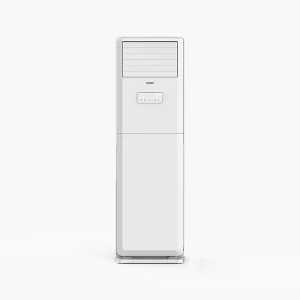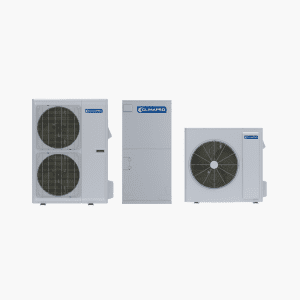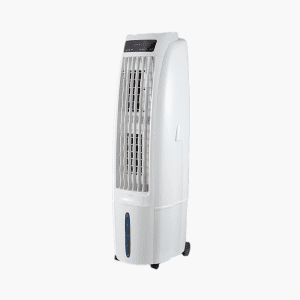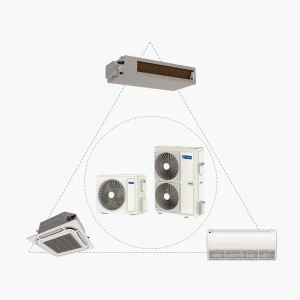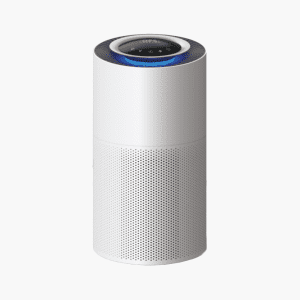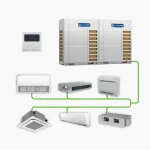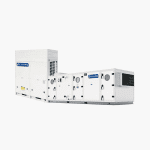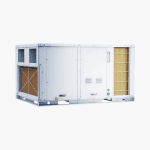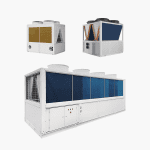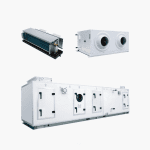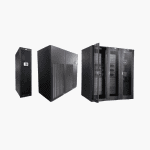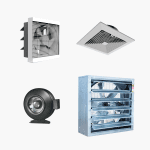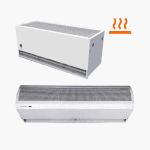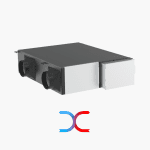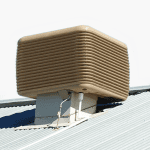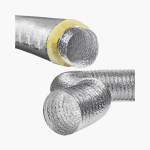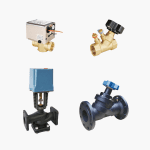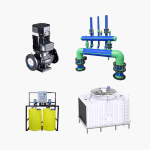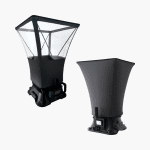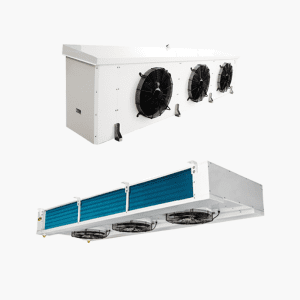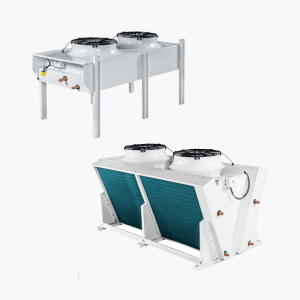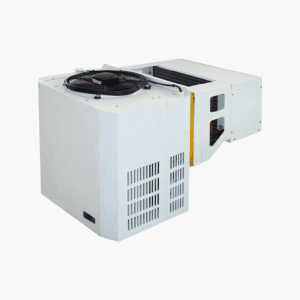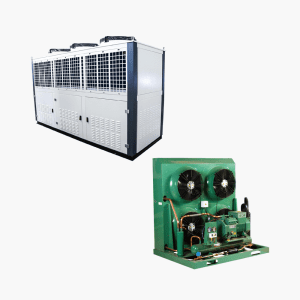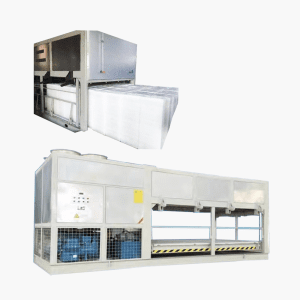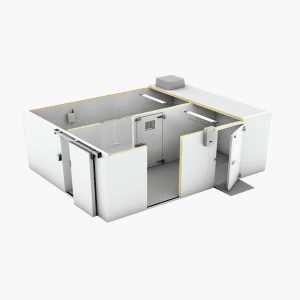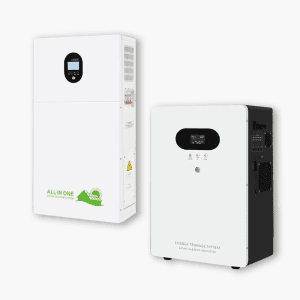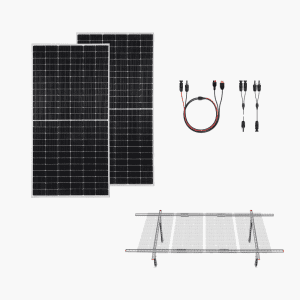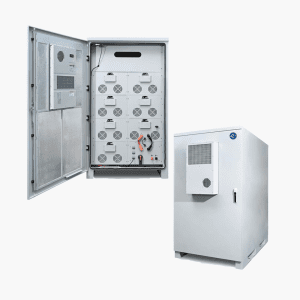أنظمة Mini Split مقابل أنظمة VRF: شرح الفروقات الرئيسية
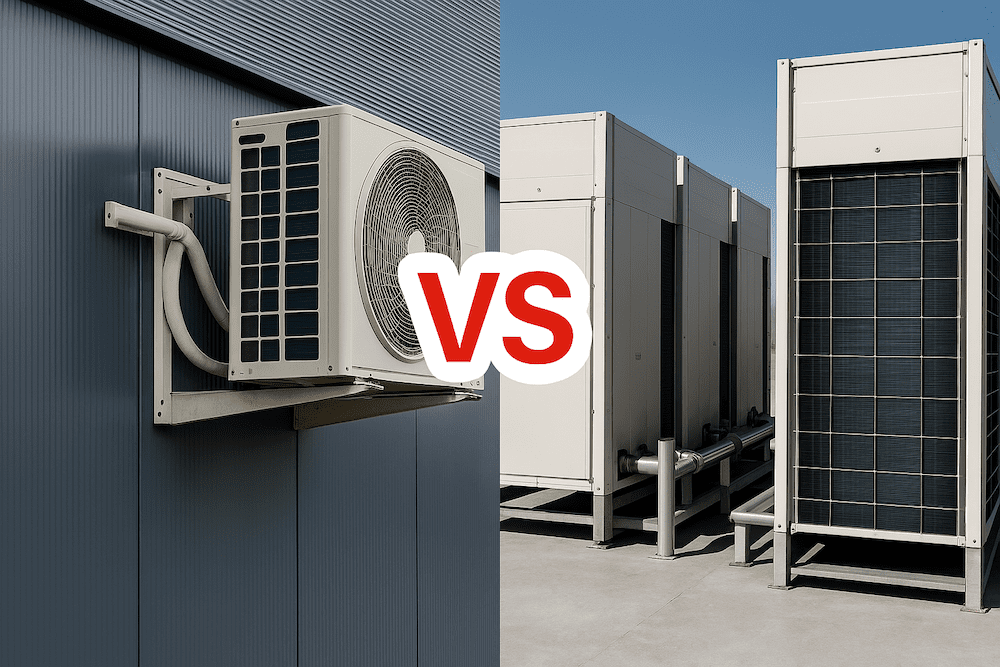
Mini Split vs. VRF: Understanding the Key Differences
Mini Split and Variable Refrigerant Flow (VRF) systems are both popular choices for heating and cooling, sharing similarities that can make them suitable for overlapping applications. However, fundamental differences exist, particularly concerning their design, capacity, and control mechanisms. This article clarifies the distinctions between these two HVAC technologies.
System Type: Direct Expansion
Both Mini Splits and VRF systems operate on the principle of Direct Expansion (DX). In a DX system, the refrigerant is circulated directly to the indoor units (evaporator coils) where the heat exchange process occurs to provide cooling or heating. This contrasts with indirect expansion systems, like chilled water systems, which use an intermediate fluid (like water) cooled or heated centrally and then circulated to indoor units.
- Mini Splits: Function as DX systems, whether single-zone or multi-zone.
- VRF Systems: Also DX systems, delivering refrigerant directly to each indoor unit despite often using a single main pipe run.
Are Mini Splits Considered VRF Systems?
While both Mini Splits and VRF systems can utilize similar types of indoor units (wall-mounted, ceiling cassette, floor-mounted, ducted), they are fundamentally different technologies.
VRF, standing for Variable Refrigerant Flow, is defined by its intelligent refrigerant management. A VRF system precisely controls the amount of refrigerant flowing to each individual indoor unit based on its specific heating or cooling demand. This allows for optimized energy efficiency and temperature control across multiple zones.
Multi-Zone Mini Splits, while connecting multiple indoor units to a single outdoor unit, operate differently. Each indoor unit has its own dedicated pair of refrigerant lines running back to the outdoor unit. The system functions more like multiple independent single-zone systems managed by one larger outdoor condenser unit, without the sophisticated refrigerant flow modulation characteristic of VRF.
Manufacturers consistently categorize Mini Splits and VRF systems separately in their product literature and technical documentation, reinforcing that Mini Splits are not VRF systems.
Key Differences: Mini Split vs. VRF
Beyond the core technology, several practical differences distinguish Mini Splits from VRF systems:
1. Refrigerant Piping
- Mini Splits (Multi-Zone): Require a dedicated pair of refrigerant pipes (liquid line and gas line) for each indoor unit, running all the way back to the outdoor unit. A 5-zone system will have 5 pairs of pipes connected to the outdoor unit.
- VRF Systems: Utilize a single pair of main refrigerant pipes running from the outdoor unit. Special fittings, known as Y-joints (or Refnet joints), or sometimes refrigerant distribution branch boxes, are used along the main run to branch off refrigerant to individual indoor units. This significantly reduces the amount of piping required, especially in complex layouts.
2. System Capacity and Scalability
- Mini Splits (Single-Zone): Typically range up to around 24,000 BTU. Multi-zone systems offer higher combined capacities but are generally limited compared to VRF.
- VRF Systems: Offer a much wider and higher capacity range. Smaller VRF systems might start around 18,000 BTU, but modular designs allow them to scale significantly, often exceeding 300,000 BTU (25+ tons) or even reaching over 500,000 BTU (40+ tons) for large commercial applications by combining multiple outdoor modules.
3. Indoor Units
- While the types of indoor units (wall, cassette, etc.) look similar, they are not interchangeable between Mini Split and VRF systems. VRF indoor units contain specialized control boards and electronic expansion valves necessary to communicate with the VRF outdoor unit and manage variable refrigerant flow.
4. Control Systems
- Mini Splits: Typically use simpler controls, often with individual infrared remote controllers for each zone or basic wired controllers. Centralized control options are usually less sophisticated than VRF.
- VRF Systems: Feature advanced microprocessor controls and communication networks between indoor units, outdoor units, and centralized controllers. They allow for precise zone control, scheduling, monitoring, and integration with Building Management Systems (BMS) in commercial settings.
5. Cost
- Mini Splits: Generally have a lower upfront cost for both equipment and installation compared to VRF. Single-zone repair costs (like a refrigerant leak) are isolated to that specific unit.
- VRF Systems: Significantly more expensive initially due to the complex technology, sophisticated controls, and often larger scale. Refrigerant leaks can be very costly to repair, potentially requiring recharging the entire system, similar to multi-zone mini splits where a leak affects the whole system's charge.
6. Installation Requirements
- Copper Pipe Thickness: VRF systems often operate at slightly higher pressures and may require slightly thicker copper piping than standard Mini Splits.
- Insulation: Most Mini Splits require insulation only on the refrigerant gas line (suction line). VRF systems typically require both refrigerant lines (liquid and gas) to be fully insulated, as both can become cold enough during operation to cause condensation.
Is VRF Considered Central Air Conditioning?
Traditional "Central Air Conditioning" usually refers to systems (like a furnace paired with an outdoor condenser and extensive ductwork) that condition an entire house, often controlled by a single thermostat with limited zoning capabilities.
VRF systems represent a form of centralized air conditioning because one outdoor unit (or a connected bank of units) serves multiple indoor zones. However, unlike traditional central air, VRF offers:
- Independent Zone Control: Each indoor unit can be set to different temperatures (within system mode limits - e.g., all cooling or all heating, unless it's a heat recovery VRF).
- Individual Temperature Sensing: Each VRF indoor unit typically has its own temperature sensor, rather than relying on one central thermostat.
While VRF can be monitored and managed from a central controller or BMS, its ability to provide granular zone control distinguishes it from traditional central AC. It's better described as a highly advanced, zoned, centralized DX system.
Summary of Key Differences
| Feature | Mini Split (Single & Multi-Zone) | نظام VRF |
|---|---|---|
| Core Technology | Standard Direct Expansion | Variable Refrigerant Flow (Intelligent DX) |
| Refrigerant Pipes | 1 Pair per Indoor Unit (Multi-Zone) | 1 Main Pair, branches via Y-Joints/Boxes |
| Capacity | Lower, less scalable | Wide range, highly scalable (modular) |
| Indoor Units | Specific to Mini Split systems | Specific to VRF systems (not interchangeable) |
| Control | Simpler, often individual remotes | Advanced, networked, centralized options, BMS |
| Cost | Lower upfront cost | Significantly higher upfront cost |
| Leak Repair Cost | Lower (Single-Zone), High (Multi-Zone) | High |
| Pipe Insulation | Often gas line only | Both liquid and gas lines required |
| Pipe Thickness | Standard | Potentially thicker |
| System Type | Not VRF | Not traditional "Central Air" |
Comparison Table: Mini Split vs VRF Systems
Conclusion
Mini Splits and VRF systems are distinct technologies, despite sharing the direct expansion principle and similar indoor unit styles. Mini Splits (especially single-zone) offer simpler, lower-cost solutions for smaller applications. Multi-zone Mini Splits provide basic zoning. VRF systems deliver sophisticated, highly efficient, and scalable climate control for larger residential projects or commercial buildings, albeit with a significantly higher budget requirement. Understanding these differences is crucial for selecting the appropriate HVAC system for specific needs and constraints.


